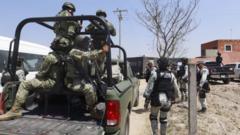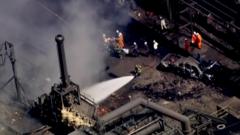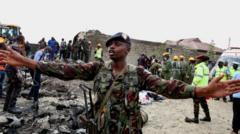The crash of Air India Flight AI171 minutes after takeoff prompts investigation into potential causes, including dual engine failure and bird strikes, as aviation experts analyze flight conditions and possible human error.
Investigation Launched into Air India Flight AI171 Crash Just After Takeoff

Investigation Launched into Air India Flight AI171 Crash Just After Takeoff
Probe seeks answers to the tragic crash of Boeing 787-8 Dreamliner shortly after departing from Ahmedabad, leaving 241 dead.
A fresh investigation is underway regarding the tragic crash of Air India Flight AI171, a Boeing 787-8 Dreamliner, just moments after taking off from Ahmedabad's Sardar Vallabhbhai Patel International Airport. Officials from India, the US, and the UK will collaborate as they piece together the circumstances surrounding the disaster, which claimed the lives of 241 passengers and crew members onboard, plus additional casualties on the ground.
The flight took off at 1:39 PM local time but made a distress call shortly after, indicating a critical failure. Eyewitnesses and footage of the incident show the aircraft struggling to gain altitude almost immediately, leading experts to consider several potential factors behind the crash. These include rare engine failures and bird strikes, both of which have previously posed threats to aviation safety.
Seasoned pilots have recounted that Captain Sumeet Sabharwal and co-pilot Clive Kundar were experienced, possessing over 9,000 flight hours between them. However, all investigations will hinge on uncovering new data from the aircraft's black box and examining debris left from the crash. The Boeing 787-8 has not previously experienced a fatal accident since its introduction in 2011, raising questions on how such a tragedy could occur during a routine departure.
The distress call made by the cabin crew shortly after takeoff has left investigators puzzled, particularly since the flight reached a maximum altitude of just 625 feet before tragedy struck. Experts speculate a "double engine failure" might have occurred, a scenario rarely seen in modern aviation, although no definitive evidence points toward that yet.
Many pilots have also raised concerns over potential bird strikes, pointing out that Ahmedabad's airport is known for its bird activity. Recent statistics showed 462 bird strikes in Gujarat over the past five years, making it a significant factor for investigation.
Lastly, questions persist around whether the aircraft’s flaps, crucial for lift during takeoff, were adequately set. As aircraft configurations significantly affect performance, any human error regarding flap settings could lead to disastrous outcomes, particularly under the hot conditions reported during the flight. Experts have emphasized that extensive training and checklists ought to minimize such mistakes but stress that every possibility must be thoroughly considered in light of this tragic incident.




















